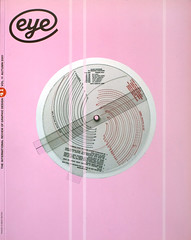Autumn 2001
The lost world of clean modernism
Zero! Hans Schleger: A Life of Design
Edited by Pat Schleger<br>Lund Humphries, £30When we look at the graphic design of Hans Schleger we are transported to the lost world of clean and intelligent mid-twentieth century modernism: shopping for chairs at John Lewis (whose logo Schleger designed in 1963-66) before buying trout for dinner at Macfisheries (whose look he was also responsible for) and going home by Underground, our eyes resting on the calm of Schleger’s London Transport posters.
Or we might prefer New York, where Schleger worked between leaving Germany and coming to London. Cary Grant sips a martini in the 21 Club, having just secured the advertising account for American Overseas Airlines (publicity designed by Schleger in the late 1940s) when two men, mistaking him for the government agent they are hunting, inform him a gun is pointed at his heart and compel him to come with them. In trains, hotel rooms, even at the cafeteria overlooking the carved heads of the presidents as he is pursued across America north by northwest, Grant is dogged by good design, from his personalised matches with their elegantly jokey ‘Rotgut’ logo to the superb high modernist mountain home in which he finally confronts the villain. Because this was the era of design, and the era of Hans Schleger.
Today we live among clutter, crawl across the wreckage of a house party in which retro modernist furniture is there, yes, but so are inflatable armchairs, lava lamps, barbecues. Clarity is now just an option. Then it was truth, and Schleger was one of its priests – not a prophet along the lines of Mies van der Rohe, but a genial, civilised pastor whose concise designs from the decades after World War II embody the best period in the history of modern Britain: the years of the Welfare State, Penguin Books and The Beatles. Schleger managed to capture the goodness of that time and his designs are rocks of integrity in our age of mediocre pluralism. It’s almost heartbreaking to look at his designs for Penguin book imprints from the 1960s - when books still mattered. There’s the peregrine symbol that graced Penguin’s history and criticism publications; the kestrel for children’s books; his design for Penguin hardbacks and, best of all, for education books – a grown-up Penguin standing tall and proud, a infant penguin beside it with the same excellent posture. Imagination, radicalism, belief in culture – where do you feel that today? Nowhere more than looking across a sea of old Penguin paperbacks mouldering on a secondhand bookstall.
It was too good to last, that brightly optimistic, public-spirited tone even big business adopted in 1940s, 50s and early 60s Britain. The spiralling lines amplifying the motion of a tennis player whose dynamism promotes ‘great integration’ in a 1952-53 ad for Associated Electrical Industries, are more than technocratic; they suggest an organic virtue. Today the products for which he created packaging seem as quaintly redolent of an older modernity as his designs are noble. His sharp minimalist look for the British Sugar Corporation takes us back to a time when sugar was good, when there was something called ‘tea-time’ (BSC sugar cubes, his cool lettering informs us, make excellent ‘tea-time sugar’).
Zero! is a densely informative and attractively utilitarian celebration of Schleger’s work that reacquaints us with the simplicity of an age when the worst social climbing was as innocent as Bob and Thelma in Whatever Happened to The Likely Lads. You realise it would be wonderful to believe as straightforwardly in any public service as people once did when they waited, under the sign brilliantly simplified by Schleger to an abstract circle and horizontal bar from its more representational earlier version in 1935-37, for a London bus.
Jonathan Jones, art critic, London
First published in Eye no. 41 vol. 11, 2001
Eye is the world’s most beautiful and collectable graphic design journal, published quarterly for professional designers, students and anyone interested in critical, informed writing about graphic design and visual culture. It is available from all good design bookshops and online at the Eye shop, where you can buy subscriptions and single issues.

